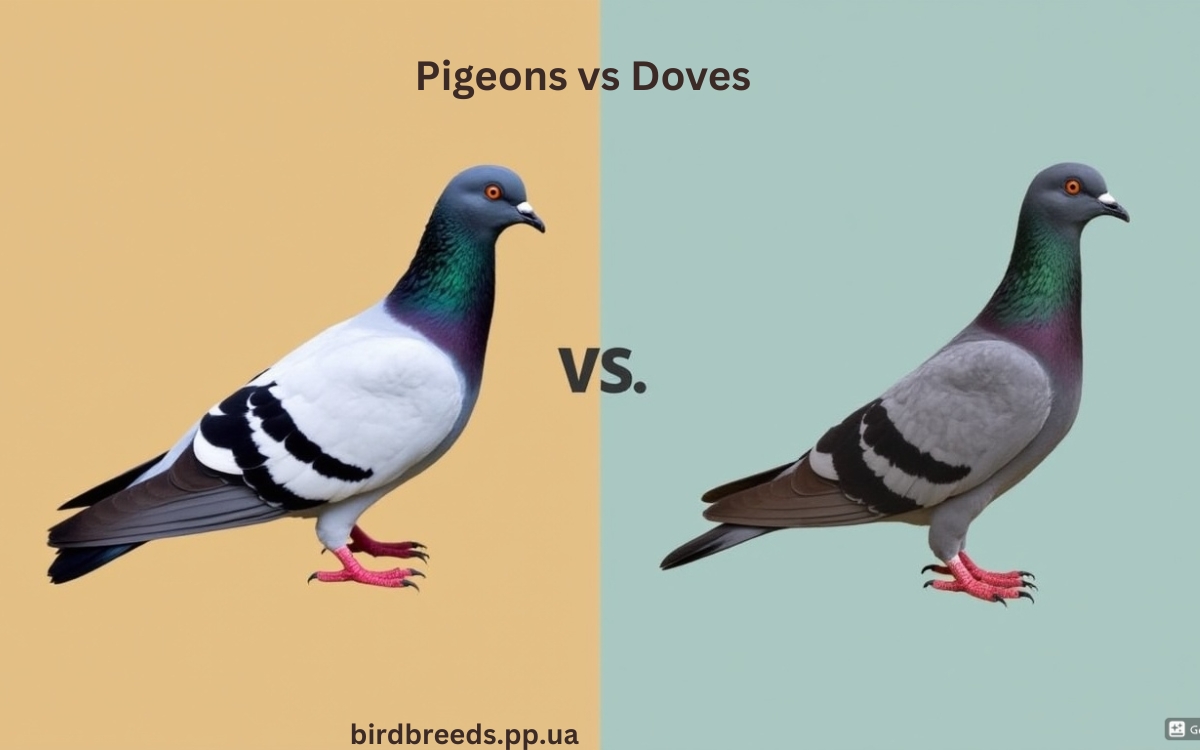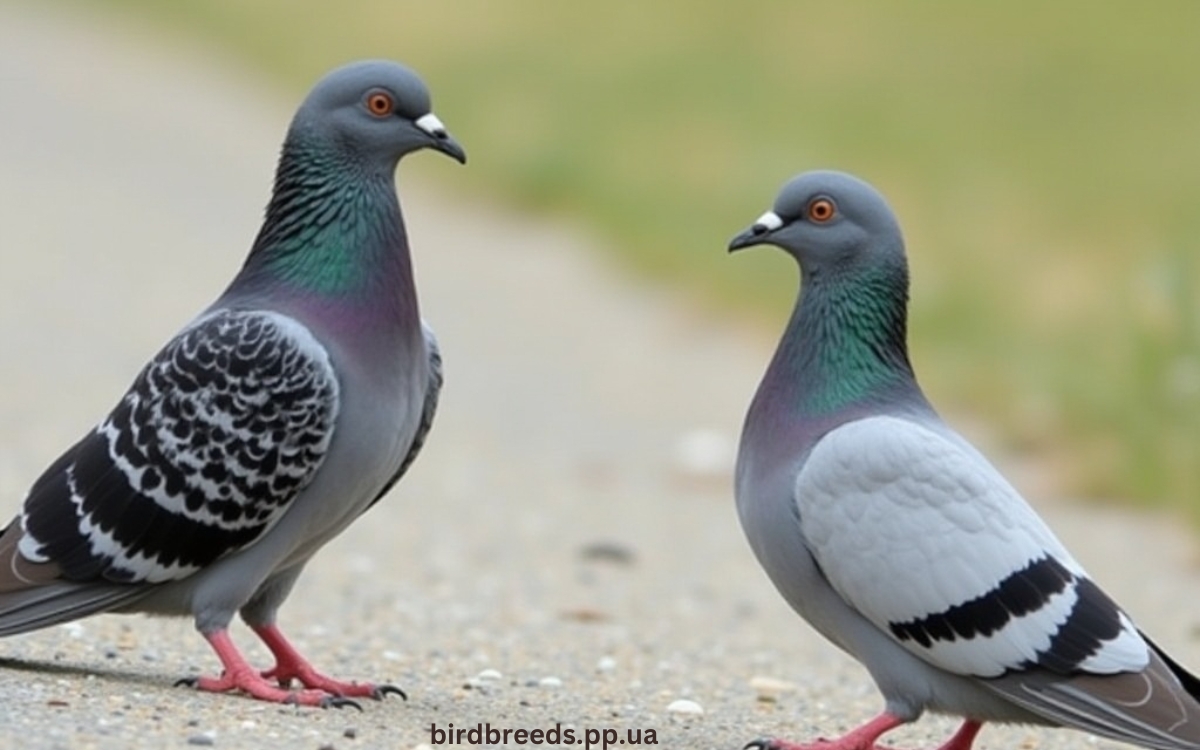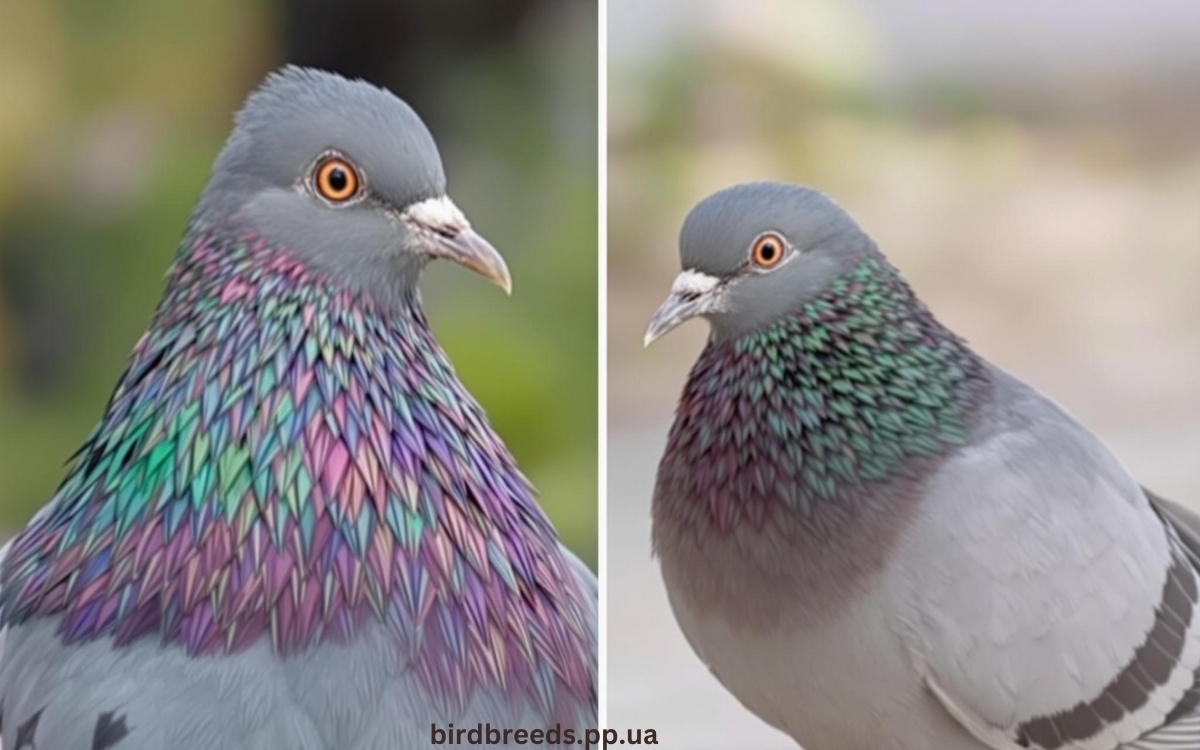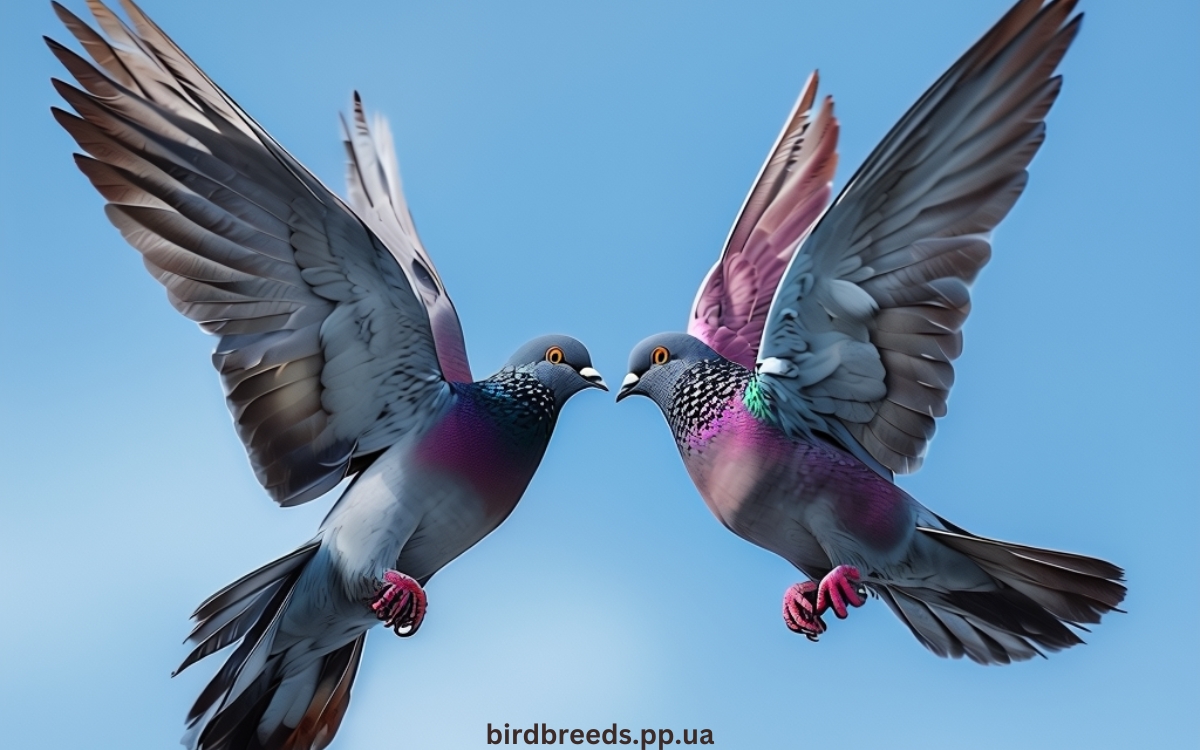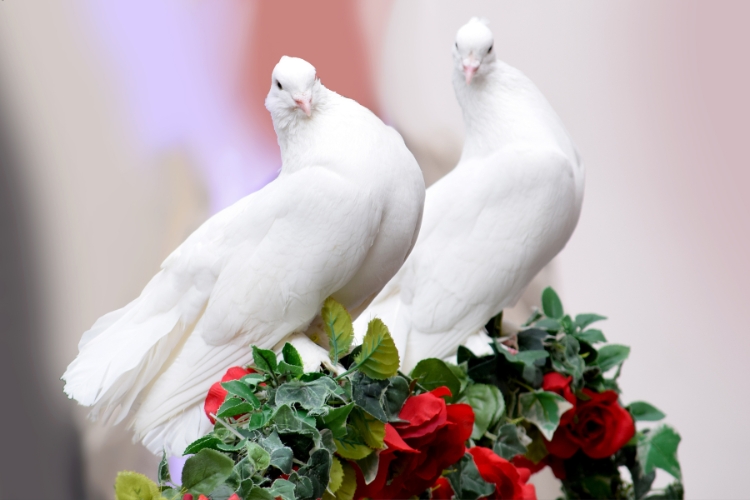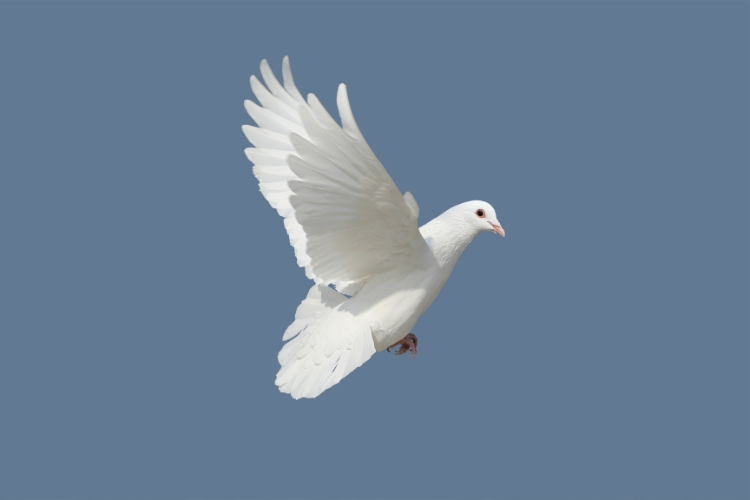Summary:
“Pigeons and doves belong to the same Columbidae family with no clear taxonomic distinction, though they present observable differences in size, coloration, habitat preferences, and behaviors. While pigeons are typically larger with grayer plumage and adapt readily to urban environments, doves are generally smaller with softer tan coloration and prefer more natural settings. Both bird groups play important ecological roles in seed dispersal and as prey species, carry rich cultural symbolism across civilizations, and demonstrate remarkable adaptations including navigation abilities and shared parenting through the production of crop milk.?
When we see a grayish bird with a plump body cooing on a windowsill or perched on a park statue, do we know whether we’re looking at a pigeon or a dove?
These birds are often confused, and for good reason. Both belong to the same family, Columbidae, and share remarkable similarities in appearance and behavior.
Yet, there are distinct differences that set them apart, from their size and habitat preferences to their cultural symbolism across different societies.
The Columbidae Family: Shared Ancestry and Classification
Pigeons and doves belong to the Columbidae family, comprising approximately 310 species worldwide. This taxonomic grouping has led to considerable confusion among bird enthusiasts and casual observers alike. Scientifically speaking, there is no clear taxonomic distinction between pigeons and doves – the terms are often used interchangeably within the scientific community.
Dr. Kevin Winker, Curator of Birds at the University of Alaska Museum, explains: “The distinction between ‘pigeon’ and ‘dove’ is not a scientific one but rather a linguistic convention that varies across cultures and languages. In ornithological terms, they are simply different members of the same family.”
This scientific reality contrasts with our everyday language, where we tend to categorize these birds differently based on size, appearance, and the contexts in which we encounter them.
Physical Characteristics: How to Tell Them Apart
Despite belonging to the same family, certain physical characteristics can help distinguish between what we commonly call pigeons and doves:
1. Size and Build
Pigeons typically display:
- Larger, more robust bodies (averaging 300-500 grams)
- Thicker necks
- Shorter legs relative to body size
- Squarer, more substantial tails
- More pronounced chest muscles for sustained flight
Doves generally feature:
- Smaller, slimmer bodies (averaging 100-200 grams)
- More delicate proportions
- Longer tails that often taper to a point
- Smaller heads relative to body size
- More streamlined appearance overall
2. Coloration and Plumage
While color variations exist within both groups, certain patterns are more typical:
Pigeons commonly display:
- Grayer plumage, particularly in urban environments
- More iridescence around the neck (especially in Rock Pigeons)
- Greater color variation in domesticated varieties
- More distinct wing bars and patterns
Doves tend to exhibit:
- Softer, often tan or warm beige coloration
- More uniform plumage with subtle patterns
- Less iridescence
- Cleaner, less mottled appearance
3. Vocalizations
The sounds these birds make can also provide clues to their identity:
Pigeons produce:
- Deeper, more guttural “coos”
- More persistent calling patterns
- Varied repertoire including grunts and growls during courtship
Doves emit:
- Higher-pitched, softer cooing
- More melodious sounds
- Often described as more “mournful” or “peaceful” calls
Behavioral Differences and Habitat Preferences
Beyond physical characteristics, pigeons and doves show distinct behavioral patterns and habitat preferences that can help differentiate them:
1. Natural Habitats
Pigeons are highly adaptable and found in diverse environments:
- Urban environments (building ledges, bridges, monuments)
- Coastal cliffs (original habitat of Rock Pigeons)
- Agricultural areas
- Rocky mountains
- Worldwide distribution across continents
Doves typically prefer:
- Woodland edges
- Open forests
- Grasslands
- Desert environments
- Gardens and parks with ample vegetation
- More natural settings away from dense urban centers
3. Feeding Habits
While both birds are primarily granivorous (seed-eating), subtle differences exist:
Pigeons:
- More opportunistic feeders
- Readily adapt to human food sources
- Feed in larger flocks
- Often forage on the ground in urban areas
- Can consume a wider variety of food items
Doves:
- More selective feeding habits
- Stronger preference for natural seeds and grains
- Often feed in smaller groups or pairs
- More likely to feed on elevated platforms or in trees
- Less dependent on human food sources
4. Nesting Behavior
Nesting practices offer additional distinguishing characteristics:
Pigeons:
- Build sturdier, often messier nests
- Frequently nest on artificial structures (buildings, bridges)
- May nest in colonies or close proximity to other pairs
- Often reuse nesting sites for multiple seasons
- More tolerant of nesting in noisy, busy locations
Doves:
- Construct more delicate, often minimal nests
- Prefer natural nesting sites in trees and shrubs
- Typically maintain greater distance between nests
- More secretive about nesting locations
- Often choose quieter, more secluded nesting sites
Common Species Around the World
1. Well-Known Pigeon Species
- Rock Pigeon (Columba livia) – The common city pigeon found worldwide, ancestor to all domestic pigeons
- Wood Pigeon (Columba palumbus) – Larger species common in European woodlands and parks
- Band-tailed Pigeon (Patagioenas fasciata) – Native to western North America
- Victoria Crowned Pigeon (Goura victoria) – Large, ornate ground-dwelling pigeon from New Guinea
- Pink-necked Green Pigeon (Treron vernans) – Colorful species from Southeast Asia
2. Notable Dove Species
- Mourning Dove (Zenaida macroura) – Common across North America, known for plaintive call
- European Turtle Dove (Streptopelia turtur) – Migratory species facing population decline
- Diamond Dove (Geopelia cuneata) – Tiny Australian species popular in aviculture
- White-winged Dove (Zenaida asiatica) – Found in southwestern US and Central America
- Ring-necked Dove (Streptopelia capicola) – African species widely kept as pets
Ecological Roles and Importance
Both pigeons and doves play significant roles in their ecosystems:
1. Seed Dispersal
As primary consumers of seeds, these birds contribute substantially to plant dispersal. Their digestive systems are designed to process seeds, often passing them through intact and viable, helping to:
- Spread plant species across diverse landscapes
- Regenerate forests and woodlands
- Maintain plant biodiversity
- Transport seeds to disturbed or recovering areas
2. Food Chain Participation
Pigeons and doves serve as important prey species for numerous predators:
- Peregrine falcons have evolved specifically to hunt pigeons
- Hawks, eagles, and owls regularly target both pigeons and doves
- Urban environments support predators like falcons partially due to pigeon abundance
- Smaller doves provide food for medium-sized predators including cats, foxes, and snakes
3. Biodiversity Indicators
The presence and health of pigeon and dove populations can indicate environmental conditions:
- Declining dove populations often signal habitat loss or degradation
- Urban pigeon adaptations demonstrate evolutionary responses to human environments
- Migratory dove patterns reflect climate conditions and seasonal changes
- Species diversity can indicate ecosystem health
Pigeons, Doves, and Humans: A Complex Relationship
Few bird families have such varied relationships with humans as the Columbidae:
1. Cultural Symbolism and Significance
Across cultures and throughout history, these birds have carried powerful symbolism:
Doves are frequently associated with:
- Peace and harmony (the universal peace symbol)
- Love and devotion (often released at weddings)
- Purity and innocence (religious iconography)
- The Holy Spirit in Christian traditions
- Messengers in numerous mythologies
Pigeons historically represented:
- Loyalty and homing abilities
- Messengers in wartime
- Fertility and prosperity in some cultures
- Urban adaptation and resilience
- Intelligence and learning capacity
2. Historical Uses and Domestication
Humans have utilized these birds for thousands of years:
Pigeons have been:
- Domesticated for over 5,000 years
- Bred into hundreds of varieties for specific purposes
- Used extensively as messengers, including during both World Wars
- Raised for meat (squab) in many cultures
- Trained for competitive racing and exhibitions
Doves have served as:
- Religious and ceremonial symbols
- Popular cage birds, particularly White Doves
- Performers in magic shows and releases
- Subjects in art and literature throughout human history
- Symbolic releases at important events
Comparative Table: Pigeons vs. Doves at a Glance
| Characteristic | Typical Pigeons | Typical Doves |
|---|---|---|
| Size | Larger (300-500g) | Smaller (100-200g) |
| Build | Robust, thicker necks | Slender, more delicate |
| Coloration | Often grayer, more iridescence | Softer colors, tan to beige |
| Tail | Squarer, broader | Longer, often tapered |
| Vocalizations | Deeper, more guttural coos | Higher, softer, more melodious |
| Habitat Preference | Urban environments, cliffs | Woodlands, forests, grasslands |
| Nesting | Sturdier nests, man-made structures | Delicate nests, natural settings |
| Feeding Behavior | More opportunistic, adaptive | More selective, natural seeds |
| Flight Pattern | Strong, direct | Often faster, more maneuverable |
| Human Association | Urban dwellers, domesticated | Symbols, ceremonial uses |
| Cultural Perception | Often considered common or pest-like | Generally viewed more positively |
Conservation Status and Threats
While some species thrive, others face significant challenges:
1. Thriving Species
Abundant Pigeon Species:
- Rock Pigeons have successfully colonized urban environments worldwide
- Feral pigeon populations continue to expand in cities globally
- Wood Pigeons have increased in numbers across Europe
Stable Dove Populations:
- Mourning Doves remain one of North America’s most abundant birds
- Eurasian Collared-Doves have expanded their range significantly
- Ring-necked Doves maintain stable populations across Africa
2. Threatened Species
Despite the success of some species, others face serious conservation challenges:
Endangered Pigeons:
- Grenada Dove (Leptotila wellsi) – Critically endangered with fewer than 140 individuals remaining
- Pink Pigeon (Nesoenas mayeri) – Recovering but still vulnerable in Mauritius
- Socorro Dove (Zenaida graysoni) – Extinct in the wild, existing only in captivity
Threatened Doves:
- European Turtle Dove has declined by more than 90% in the UK since the 1970s
- Philippine Dove species face habitat loss throughout their range
- Several island endemic doves are critically endangered due to introduced predators
3. Primary Threats
Both groups face similar conservation challenges:
- Habitat loss and fragmentation
- Agricultural intensification reducing food sources
- Hunting pressure in certain regions
- Climate change affecting migration patterns and breeding success
- Disease spread, particularly in urban populations
- Predation by invasive species on islands
Interesting Facts and Adaptations
These remarkable birds possess several fascinating characteristics that highlight their evolutionary success:
1. Navigation Abilities
Pigeons, particularly homing pigeons, demonstrate extraordinary navigation capabilities:
- Can find their way home from up to 1,300 miles away
- Utilize the earth’s magnetic field for orientation
- Process infrasound (low-frequency sound) to create mental maps
- Use visual landmarks for local navigation
- Can detect polarized light patterns invisible to humans
2. Parental Care
Unlike many birds, both pigeons and doves:
- Produce “crop milk,” a nutritious secretion fed to young
- Share parenting duties almost equally between sexes
- Maintain strong pair bonds, often for multiple seasons
- Defend territories and nests cooperatively
- Teach young to forage and navigate through example
3. Adaptive Success
Several adaptations explain their widespread success:
- Versatile diets allowing for exploitation of various food sources
- Rapid reproduction cycles compared to birds of similar size
- Ability to nest in diverse locations and structures
- Strong flight capabilities for both distance and maneuverability
- Efficient digestive systems specialized for seed processing
Caring for Pigeons and Doves
For those interested in these birds as pets or supporting wild populations:
1. As Pets
Domesticated varieties require:
- Spacious aviaries or cages with flying room
- Clean, fresh water and appropriate seed mixtures
- Grit for proper digestion
- Regular cleaning to prevent disease
- Social interaction, preferably in pairs
- Permits may be required for certain species
2. Supporting Wild Populations
Conservation-minded individuals can:
- Plant native seed-bearing plants in gardens
- Provide clean water sources like bird baths
- Install appropriate nesting platforms
- Avoid disturbance during breeding seasons
- Support conservation organizations protecting threatened species
- Participate in citizen science projects tracking populations
Conclusion:
While we casually distinguish between pigeons and doves in everyday language, understanding their shared ancestry and the spectrum of diversity within the Columbidae family enriches our appreciation of these ubiquitous birds. From the humble city pigeon navigating busy streets to the gentle mourning dove calling from a suburban tree, these birds have adapted alongside human civilization for thousands of years.
Their remarkable adaptability, fascinating biology, and cultural significance make them worthy of closer observation and conservation efforts. Whether viewed as urban wildlife, symbols of peace, or interesting biological subjects, pigeons and doves continue to thrive in our changing world, demonstrating the evolutionary success of their shared lineage.
The next time you encounter one of these familiar birds, take a moment to observe its characteristics and behavior. Is it a pigeon or a dove? The answer might be less clear-cut than you previously thought, but appreciating the nuances that differentiate them – while recognizing their profound similarities – offers a window into the fascinating world of avian adaptation and evolution.

